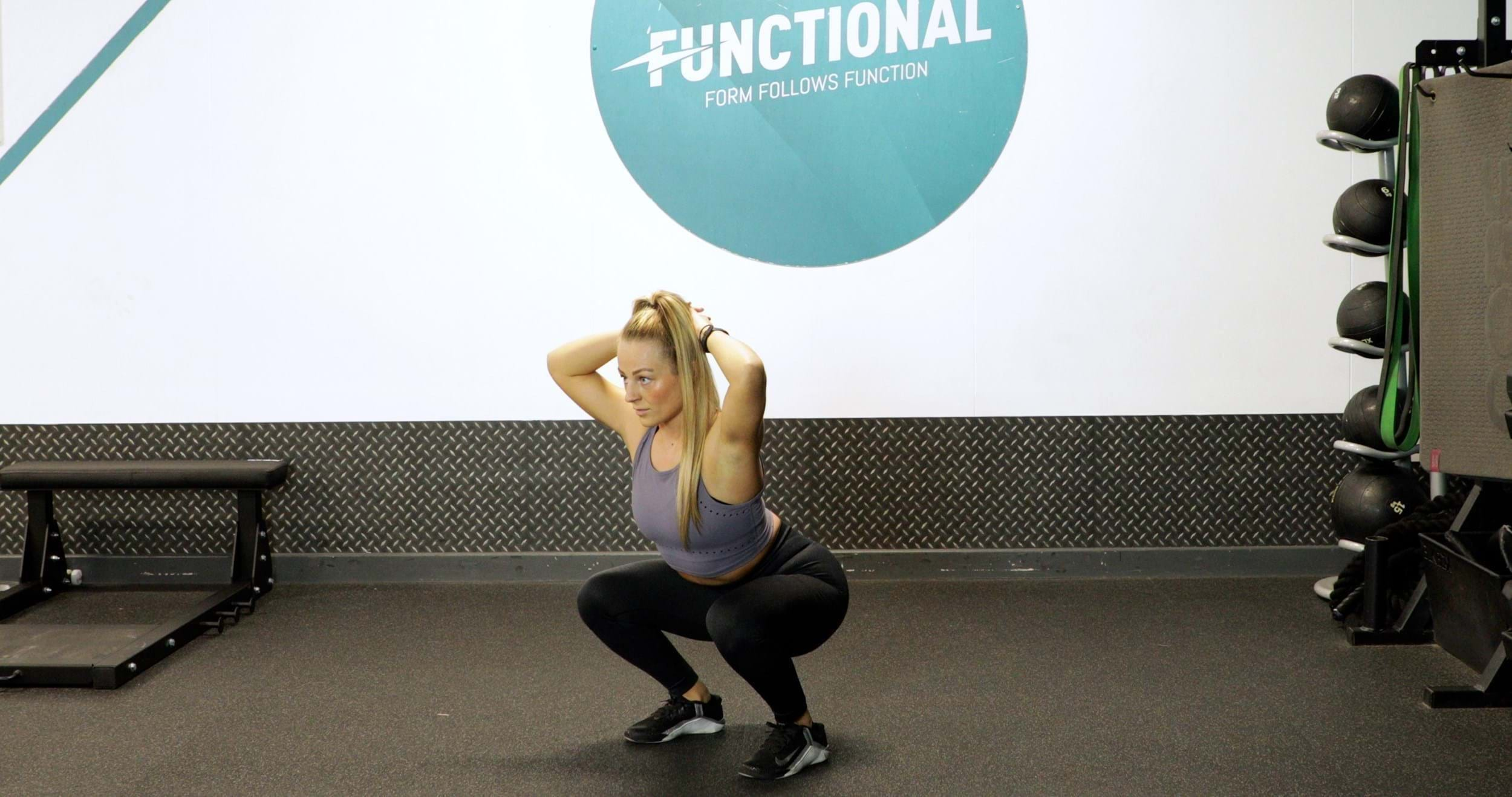Prisoner Squats
What Are Prisoner Squats?

Prisoner squats are a variation of the bodyweight squat that challenge the person to position their hands behind their head, which is where the exercise gets its name from.
Keeping the hands behind the head makes this is more challenging than standard bodyweight squats, and a great way to progress. The fixed position creates greater demand for stability and core engagement, eliminates momentum from the movement, and works the back muscles as well as the lower body. It can also help to improve your squat form and work up to an overhead squat.
Check out some other squat variations: pulse squats, tempo squats, landmine squats, zercher squats, suitcase squats
Commonly Asked Questions On Prisoner Squats
Prisoner squats are an effective lower body movement and are a suitable progression to bodyweight squats. Placing the hands behind the head, challenges the core to work harder to provide stability and there is less momentum which means the lower body muscles work harder.
They also make a great option for warmups or if you want to improve your squat technique.
Prisoner squats do build muscle, particularly if you’re new to resistance training. If you have mastered the prisoner squat, you’ll likely need to add further challenge to the movement. Try incorporating a tempo or even a pause into your prisoner squat to make them more difficult, or progress to overhead squats.
Prisoner squats are an appropriate progression to bodyweight squats and can aid individuals to enhance their lower body strength, while also working on coordination, stability, and core strength. This exercise would be suitable within a strength workout or as part of a HIIT training session.
Prisoner Squat Tips
Prisoner squats are ideal for beginners or those returning from injury, with little pressure placed on the back due to the lack of loading.
Due to the hand position, this exercise cannot be progressed by adding weight. If you’re looking to advance your prisoner squat, consider incorporating a 3 second pause at the bottom of the squat, or 1 and ¼ reps to add challenge.
How To Do Prisoner Squats
Take your preferred squat stance. Some people prefer a wider stance, whereas others find narrow stance more comfortable – choose the one you prefer and then externally rotate your feet so the toes slightly point out.
Place both hands on the back of your head so your elbows point out to the side, and maintain this throughout the whole exercise.
Push the hips back while bending the knee to begin the squat. Push your knees out to the side to prevent them caving in.
Once you reach parallel or just below parallel with the floor, you can drive back up to standing.
Push the ground away through both feet and extend your legs, maintaining a soft bend in the knee. As you reach standing, slightly squeeze the glutes but avoid pushing your hips too far forward.
If you’re not sure if any of the above exercises are suitable for you, please consult your doctor before you start it. Need guidance on how to perform the exercise? Ask a personal trainer at your gym.